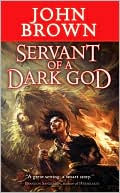Key Conditions for Suspense:
Part 17 – Structure is Problem Solving, Not Voodoo
by John D. Brown
 The following is part of a continuing series. If you wish to start at the beginning, head to It’s All About The Reader.
The following is part of a continuing series. If you wish to start at the beginning, head to It’s All About The Reader.
The Big Picture
Let’s review what’s been discussed in the last 16 posts.
Key PROBLEM conditions for reader suspense
- Part 1 – It’s all about the reader
- Part 2 – The 3 Problem Types
- Part 3 – It’s gotta be difficult
- Part 4 – Uncertainty
Key CHARACTER conditions for reader suspense
- Part 5 – Character troubles
- Part 6 – Character deservingness
- Part 7 – Character draws 1-4
- Part 8 – Character draws 5-8
- Part 9 – Character draws 9-10
Key PLOT conditions for reader suspense
- Part 10 – Clarity, the first principle of plot
- Part 11 – Make the problem hard to solve with disadvantages
- Part 12 – Make the problem hard to solve with conflicts
- Part 13 – Make the problem hard to solve with growing troubles & surprise
- Part 14 – Put your plot together with the story cycle
- Part 15 – Story cycle action and trouble
- Part 16 – The story cycle’s dynamo (and a little Hitchcock)
In the next ten or so posts, I’ll discuss the key conditions for reader suspense with regards to structure, which is just the big picture of plot. But before I dive in, I want to make sure we step back and review what we as authors are trying to do.
People go to movies, watch TV, and read novels because they enjoy having a certain type of experience. They enjoy it so much that they are willing to pay for it, again and again and again.
Our job as writers is to create a narrative that evokes this desired experience in the reader. Yes, we have to be passionate about our story. Yes, it’s an art and is complex and sometimes feels a bit mystical. But we can’t let that make us forget the fact that the ultimate purpose of the story is to guide the reader through an experience.
Now maybe that approach is too businesslike for you. Maybe it removes the artist too much from the production. If you feel that way, then think of it as the writer finding and inventing crazalicious things that he or she just can’t help but want to share. In this view, the author goes out into the world and brings back delights and wonders for others to enjoy.
There are many different delights to share. So some people love humor. Others delight in being spooked. Others want to relive the feeling of falling in love. Still others want to feel adventure and thrills. Or they enjoy the feeling of insight, wonder, curiosity, and wish-fulfillment. Others want a mix.
One of the core elements in a majority of these experiences is being in suspense about the outcome of a character’s fate. Readers love to HOPE and FEAR for a character for 90% of the story. They love their worry to build. And they love a good release.
Presenting an interesting and sympathetic character with a significant happiness problem initiates the reader’s hope and fear and curiosity (on the other hand, presenting a mystery initiates the reader curiosity, but how that works and fits into suspense is a different topic). But we can’t stop there.
Remember: readers want their worry to build to a sharp point. Then they want a good release. We do that by having the character solve his problem in a certain way. Solving a problem is what plot is all about. In the last seven parts, I talked about the details of plot. If you haven’t read them, I suggest you go read them right now so what I’ll say about structure will make sense.
Think about problem solving, not voodoo
So let’s start by demystifying structure. Let’s get to the heart of the matter. Here’s the simple truth. Story and plot are NOT about a character going on a mythic Jungian heroic journey (oh, I know some people are not going to like that). Nor are they about characters following a rigid Hollywood structure grimoire. Nor is there one secret plot pattern that all awesome stories use.
In the types of stories we’re talking about, the plot is about a character solving a problem. That’s it. That’s the grand whoop-tee-doo mystery. Not very exciting, but that’s what the writer needs to keep in mind. Well, and the fact that the manner in which the problem is resolved has to build reader tension—form follows function.
I know some people will argue that many successful artists swear by things like Joseph Campbell’s heroic journey (Star Wars anyone?). But if you read Campbell’s book, you’ll find something interesting. What Campbell did was survey traditional tales from many cultures across the globe. He listed common features of those tales and found that certain types of things kept popping up in the stories. He concluded these were signs of unconscious Jungian archetypes. There was no purpose to the form except to express the archetype. And so he listed the common elements, gave them mystical names, and explained their source in pseudo-psychological terms.
Do you see where he went wrong?
Let me do a Campbell with eating utensils. Let’s imagine I go around to all the various cultures of the world and look at what utensils they use to eat. Gadzooks, but I’d find a startling number of similarities. Who would have thought?
For example, the super rich living in their million-dollar New York high rises drink from crystal glasses while the mud-poor hut folk in Bangladeshi backwaters use gourds and sometimes even cup water with their bare hands. But it’s all the same basic form—The Hollow.
Instead of seeing that a hollow form is a great way to hold liquids and solids, I would conclude it must be a sign of some deep-seated subconscious archetype. The archetype, not the function, is why we have cups and spoons. Therefore, because The Hollow resonates with our human unconscious, maybe from our time hanging out in the womb, a powerful dinner will include The Hollow in some form precisely because it interacts with the archetype, putting us back into the womb, to the time we were being fed directly by our mothers and felt inexplicably comforted and satisfied.
It sounds good, doesn’t it? Heck, I should write a book–The Mythic Meal…
Kidding aside, do you see where I went wrong?
Campbell’s documenting all those traditional tales was a great thing. Identifying the similarities was cool. But instead of looking for the simple function the form was created to fill, Campbell ignored the function and turned the form into a magical totem.
People who study modern-day stories sometimes do the same thing. Except instead of using labels like “Threshold Guardian,” “Shape Shifter,” and “Ordeal,” they use terms like “Act,” “Plot Point,” and “Confrontation.”
I’m not arguing against labels or patterns. What I’m arguing against is divorcing form from function. It’s true that people can sometimes use Campbell’s list of common elements to develop a story that builds and releases reader tension. But when we talk about form outside of the context of its function in the reader’s experience, we prevent ourselves from seeing how things work. The form becomes a mystical black box. And because we don’t know the whys behind the form we can’t see when the form should and should not be used. We sometimes find ourselves falling into the trap of prescribing Procrustean plot beds that might be exactly wrong for the project we’re working on or into rebelling against form altogether.
So let’s not do that.
There is no voodoo here. There is only a character trying to solve a problem.
People solve problems every day. It’s not very mystical. But because it’s the core of story, thinking about how your character will try to solve her problem is one of the most powerful ways to help you figure out your plot structure and detail. And that’s what we’re going to do in the rest of these posts.
Happiness,
John
•••
 John Brown is an award-winning novelist and short story writer. Servant of a Dark God, the first book in his epic fantasy series, was published by Tor Books and is now out in paperback. Forthcoming novels in the series include Curse of a Dark God and Dark God’s Glory. He currently lives with his wife and four daughters in the hinterlands of Utah where one encounters much fresh air, many good-hearted ranchers, and an occasional wolf.
John Brown is an award-winning novelist and short story writer. Servant of a Dark God, the first book in his epic fantasy series, was published by Tor Books and is now out in paperback. Forthcoming novels in the series include Curse of a Dark God and Dark God’s Glory. He currently lives with his wife and four daughters in the hinterlands of Utah where one encounters much fresh air, many good-hearted ranchers, and an occasional wolf.
For a list of all of the posts in this series thus far, click on the “John D. Brown” tag.


